RARE Original Iwo Jima Hill 382 'Commander Amphibious Forces Pacific Fleet' Military Intelligence Photograph
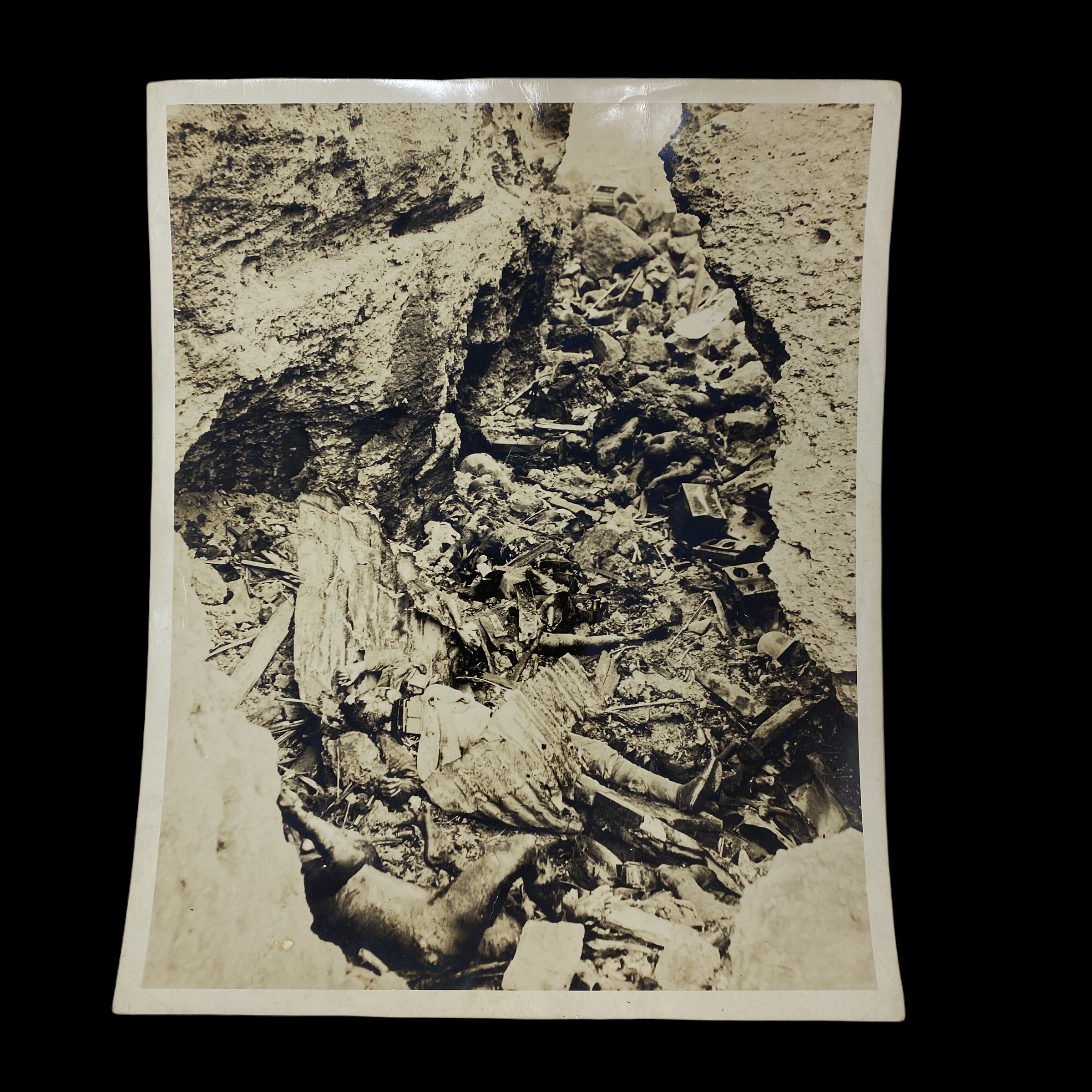
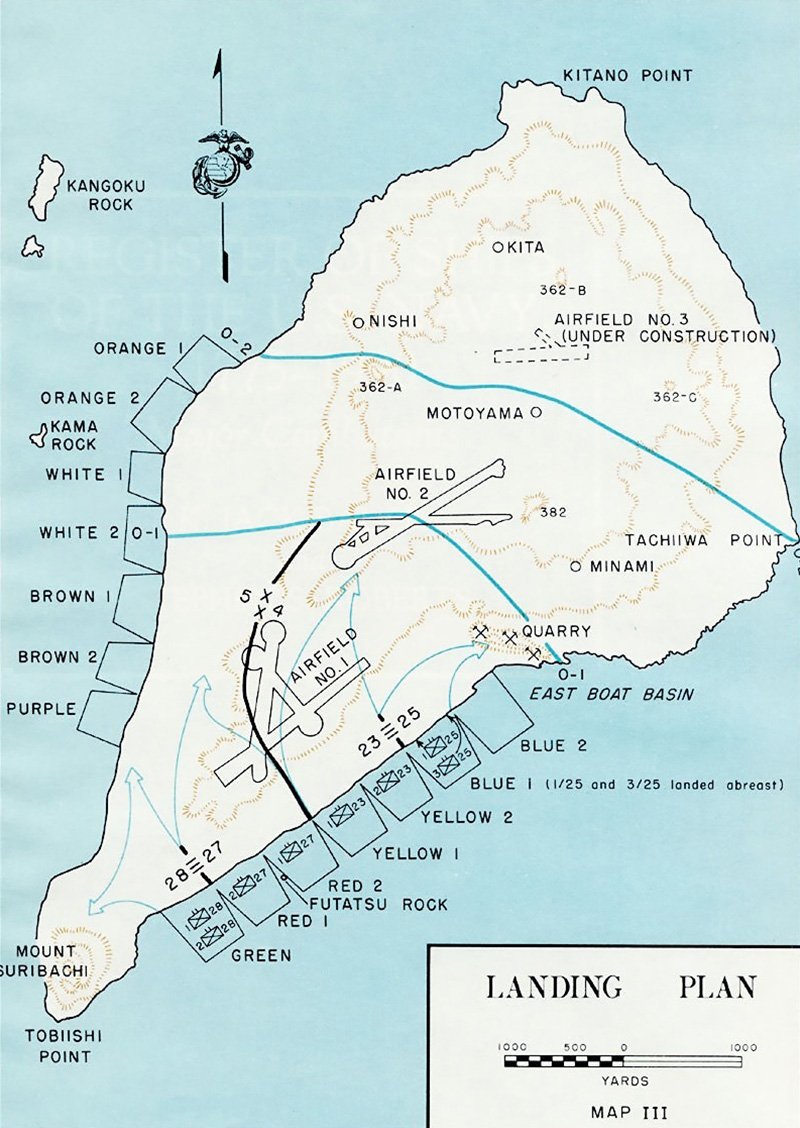


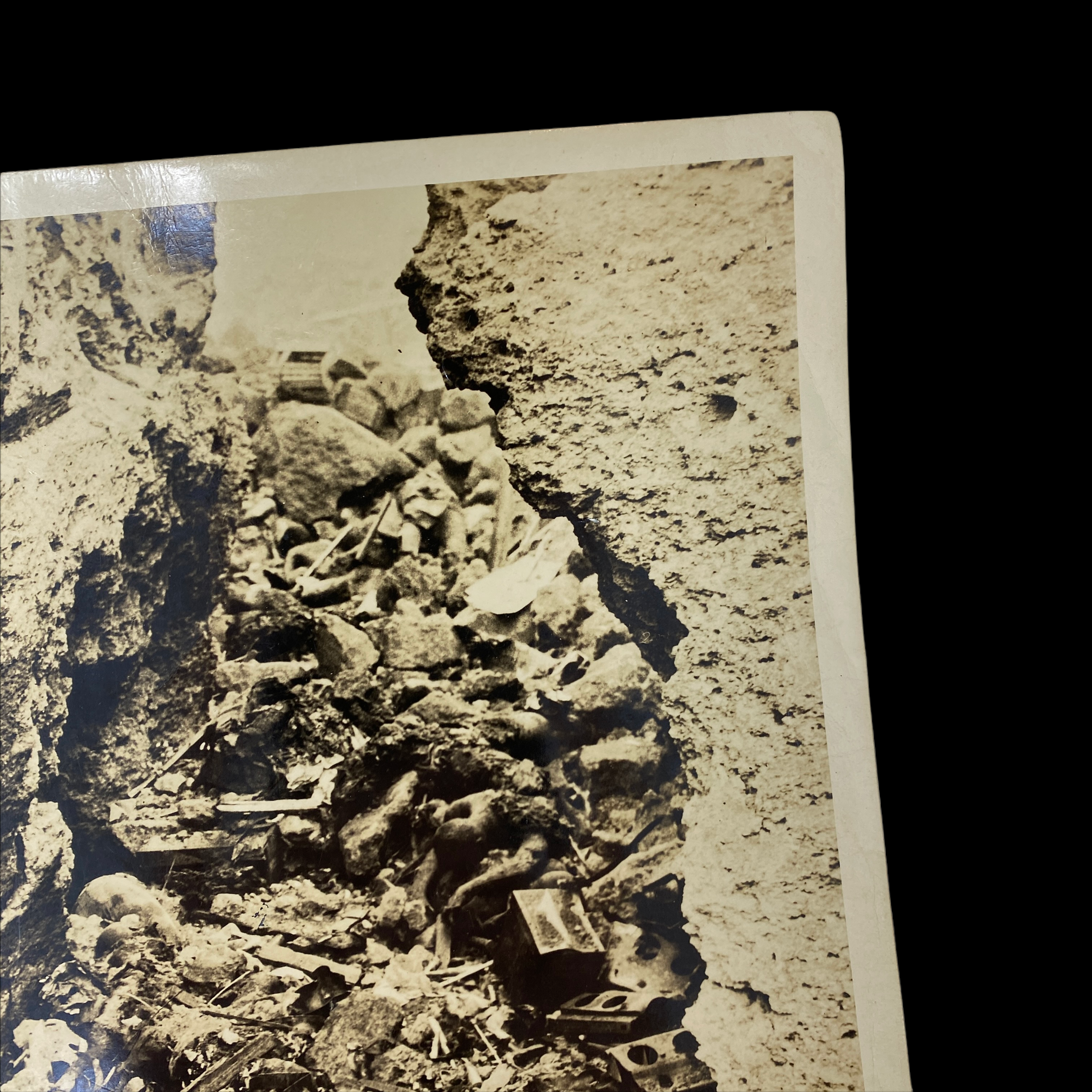
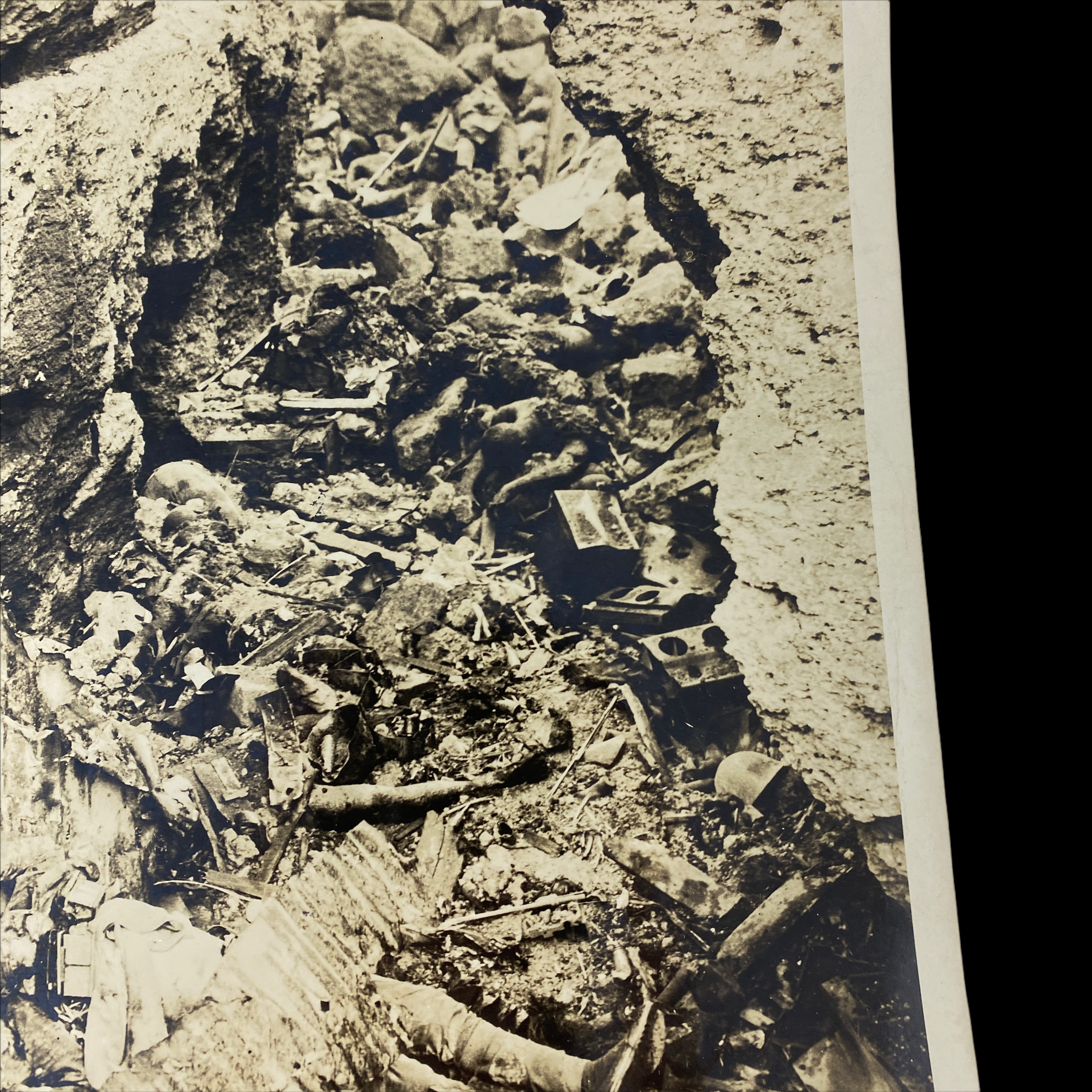
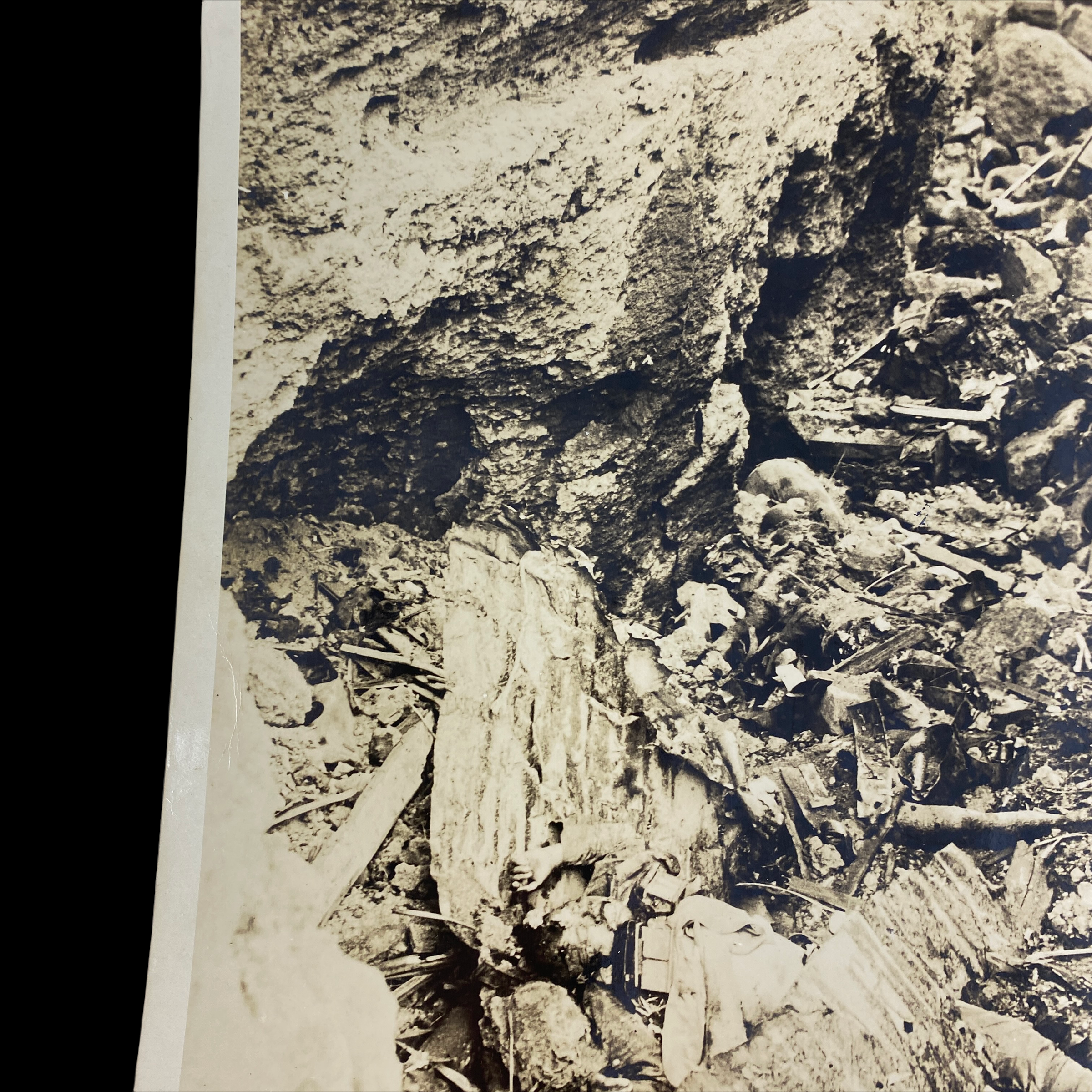
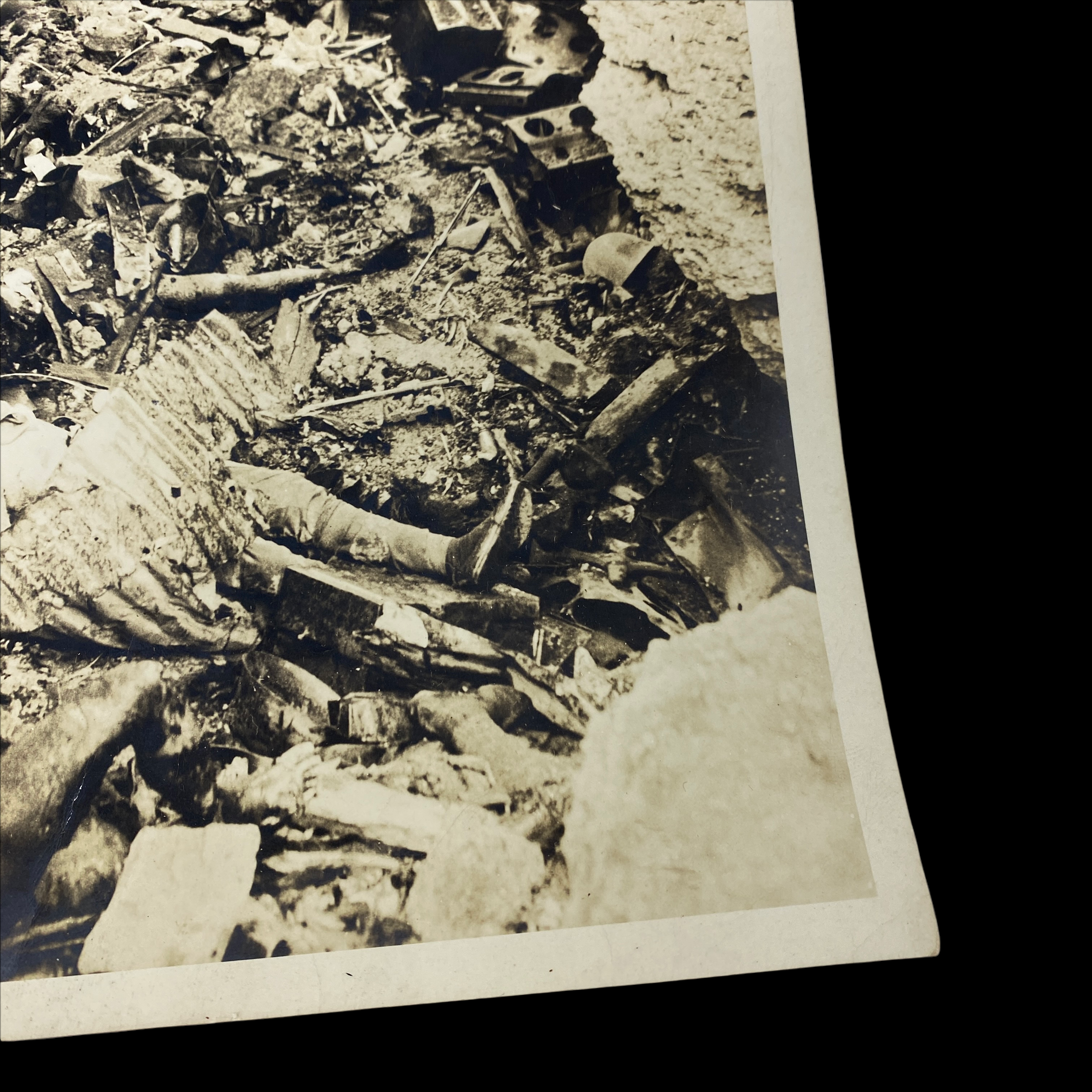

RARE Original Iwo Jima Hill 382 'Commander Amphibious Forces Pacific Fleet' Military Intelligence Photograph
Comes with C.O.A.
Size: 8 x 9.5 inches
This is an incredible unreleased and unseenCOM-PHIB-PAC ("Commander, Amphibious Forces, Pacific Fleet")photograph taken by a U.S. military intelligence photographer during U.S. operations on Iwo Jima. What makes this intelligence photo even more rare is the handinscribe location it was taken “Hill 382 - Iwo Jima”. Hill 382 is very famous in the Battle of Iwo Jima andwas the highest point north of Suribachi. The 4th Marine Division finally seized Hill 382, but continued to take heavy casualties moving through The Amphitheater against Turkey Knob.
*This is the original developed photograph, making this the original 1 of 1 and very rare Iwo Jima historical artifact. The condition is remarkable and is truly a museum grade artifact. When framed, this would be the prized piece for any USMC, WWII, or Iwo Jima collection.
This very rare photograph shows the absolute true destruction of war and was never meant to be released to the public. The job to take these photographs were extremely dangerous as they were taken during the operation and often times very much near the front lines. These were then sent and developed in the Pacific Theater where they were used for future military intelligence and future planning of operations in the Pacific Theater.
Marines on Hill 382:
Marines of 23rd Regiment, 5th Marine Division, take cover from exploding satchel charge thrown into Japanese bunker. The stoutest defenses in the north of Iwo Jima were Hill 382 (which the Japanese called Nidan Iwa), the Amphitheater, Turkey Knob, and the smashed village of Minami. These several closely related positions become known collectively as the "Meat Grinder". Nidan Iwa, 382 feet high, was located 250 yards northeast of the east-west runway of Motoyama airfield #2. The top of the hill, surmounted by the stark remains of a Japanese radar station, was hollowed out and rebuilt to contain field pieces and antitank weapons. Each of these concrete gun housings was in turn protected by as many as ten supporting machine-gun emplacements. The rest of the hill was honeycombed with the same elaborate tunneling that characterized other major installations on the island. In addition, crevices and ridges crisscrossed the entire surrounding area. Light and medium tanks, armed with 57mm and 47mm guns, parked well back in these crevices, commanded the length of the main runway of the airfield and approaches from the southwest. These guns could defeat the armor of the M4 Sherman tank. After a two-day attack starting on February 28, 1945, Company E of the 23rd Marines broke through and captured Hill 382. The 23rd Marines suffered 50 percent casualties since D-Day.
Iwo Jima:
On February 19, 1945, U.S. Marines made an amphibious landing on Iwo Jima and were met immediately with unforeseen challenges. First and foremost, the beaches of the island were made up of steep dunes of soft, gray volcanic ash, which made getting sturdy footing and passage for vehicles difficult.As the Marines struggled forward, the Japanese laid in wait. The Americans assumed the pre-attack bombardment had been effective, and had crippled the enemy’s defenses on the island.However, the lack of immediate response was simply part of Kuribayashi’s plan.With the Americans struggling to get a foothold on the beaches of Iwo Jima—literally and figuratively—Kuribayashi’s artillery positions in the mountains above opened fire, stalling the advancing Marines and inflicting significant casualties.Despite a banzai charge by dozens of Japanese soldiers as dusk fell, however, the Marines were eventually able to move in past the beach and seize part of one Iwo Jima’s airfields—the stated mission of the invasion.Within days, some 70,000 U.S. Marines landed on Iwo Jima. Although they significantly outnumbered their Japanese enemies on the island (by a more than three-to-one margin), many Americans were wounded or killed over the five weeks of fighting, with some estimates suggesting more than 25,000 casualties, including nearly 7,000 deaths. The Japanese, meanwhile, were also suffering major losses, and were running low on supplies—namely, weapons and food. Under Kuribayashi’s leadership, they mounted most of their defenses via attacks under the cover of darkness.